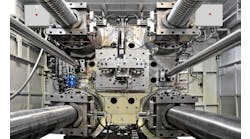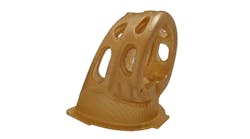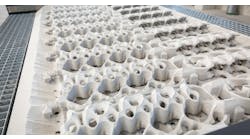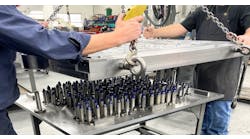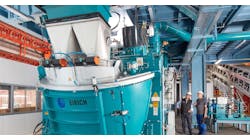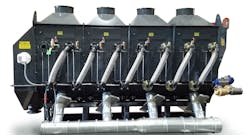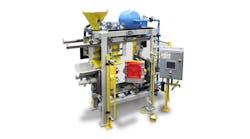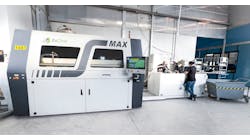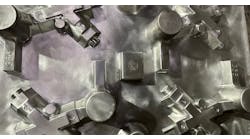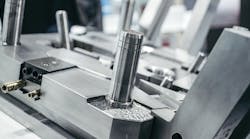Diecasting is a fully established industrial technology, but also one that is changing quickly. Developments in material selection and mold design are especially dynamic. What is not changing is the high-volume forming process for aluminum, zinc, magnesium, copper, lead, etc., which is done in either hot-chamber of cold-chamber machines.
Machine design. In hot-chamber diecasting molten metal is contained within the machine, while in cold-chamber diecasting metal remains in a container outside the machine. In both processes the molten metal is pressed from a casting chamber through one or more channels into the cavity of a permanent steel mold, where it takes a shape determined by the die, and solidifies.
Diecasting molds consist of two halves: The feed-side mold half is mounted on a fixed plate on the rigid side of the diecasting machine, while the ejector-side mold half is mounted on a movable plate placed on the other side. Before closing, the halves are sprayed with a release agent so that later the cast part can be released from the mold easily and the plates do not overheat.
Depending on the size of cast parts, up to 300 casting cycles per hour can be carried out.
When the mold is closed, the melt is pressed into the mold under a pressure of up to 1,200 bar, achieving maximum mold filling speeds of 150 m/s (540 km/h.) High closing and clamping forces are required to press the mold halves against each other and keep the molds closed: up to 8,000 kN (800 mt) in hot-chamber diecasting machines, and up to 45,000 kN (4,500 mt) in cold-chamber diecasting machines. By using such high forces, large cast parts can be manufactured.
Tooling and materials. Molds must be designed in such a way that they can permanently withstand the loads related to the large melt quantities. When the metal has solidified, the mold halves open and the cast part is ejected by bolts or removed by a robot and conveyed for further processing.
Molds are critical to the process: They determine the contours to be transferred to a part, and also should enable the metal to solidify as quickly as possible. This promotes formation of a fine-grained microstructure, which enhances casting quality.
Molds are designed to promote optimal cooling, which also may shorten production time (with obvious economic advantages.) The design of diecasting tools is described in the standard DIN 16760-1.
The tools used in the diecasting process are inevitably exposed to high thermal and mechanical loads and must be able to withstand them permanently. For example, molds for zinc diecasting reach service lives of 500,000 to 2 million cycles. In order to achieve such performances, the diecasting tools — which besides the molds include mold inserts, cores, slides and ejectors, are made of high- strength hot-work steels such as X40CrMoV5-1 (1.2344) or special materials, for example hard metals. Tools typically are designed to provide high wear-resistance, high ductility, high heat-resistance, high hot-tearing and hot-wear resistance, and good thermal conductivity. When choosing diecasting materials, their technological properties, the design of the tools, their heat treatment, and the complex interactions between the tools and the metal to be cast must be considered.
